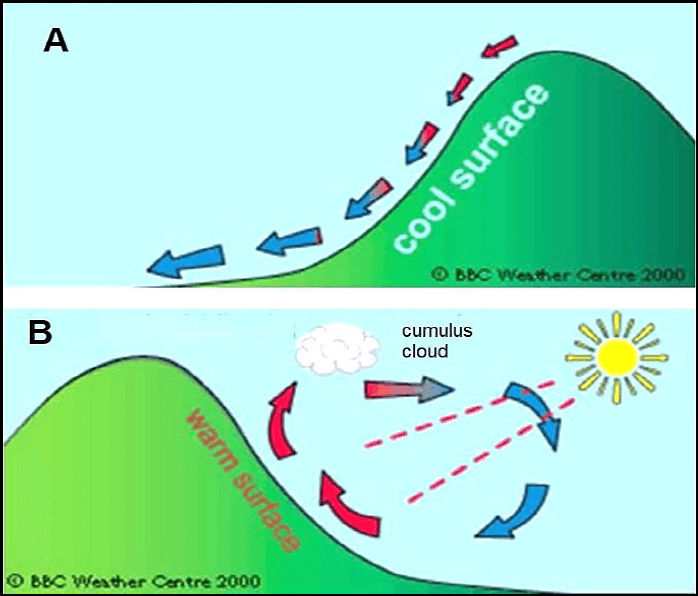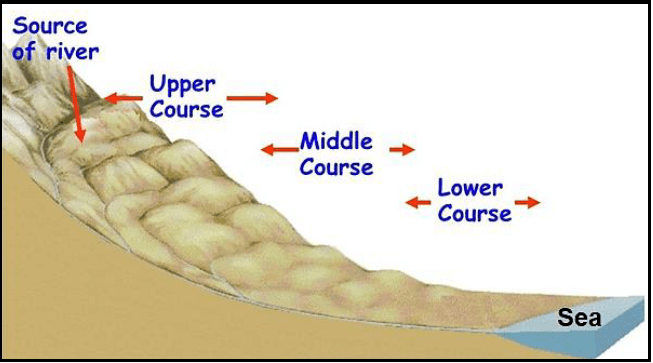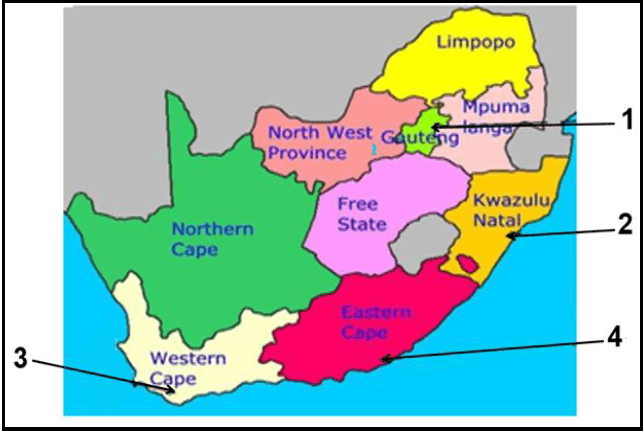Geography Paper 1 Grade 12 Annexure - NSC Past Papers And Memos September 2020 Preparatory Examinations
Share via Whatsapp Join our WhatsApp Group Join our Telegram GroupANNEXURE
FIGURE 1.1: VALLEY WINDS
[Source: pinterest.com]
FIGURE 1.3: IMPACT OF TROPICAL CYCLONE ON COASTAL REGIONS
[Source: noaantic.wordpress] [Source: the conversation.com]
FIGURE 1.4: LINE THUNDERSTORMS
[Source: twitter.com]
FIGURE 1.5: RIVER REJUVENATION
[Source: coolgeography.co.uk]
FIGURE 1.6: RIVER DISCHARGE
[Source: fiden-2phys.vef.edu] [Source: sharetechnote.com]
FIGURE 2.2: RIVER PROFILE
[Source: geoforcexc.com]
FIGURE 2.3: MID-LATITUDE CYCLONES
COLD FRONT EXPECTED TO BRING A BLANKET OF SNOW A cold front is expected on Friday‚ which is going to bring much-needed rain relief in the Western Cape. The cold front is going to be caused by a strong mid-latitude cyclone which will sweep fronts into the south-western districts on Monday. This is going to result in maximum inland temperatures ranging from 2 to 10 degrees Celsius. Heavy rainfall and snow are expected to come with these cold fronts. According to Snow Report South Africa‚ a community organisation based in KwaZulu-Natal‚ we should be expecting snow across the country as the cold front makes its way from the west coast to the east coast. ‘By Sunday evening‚ we should see some snowfall over the peaks of the majority of the Cape mountains‚’ says SRSA on their Facebook page. ‘We could also well see some snow pushing into KZN this time around‚ with [snowfall] predicted for Underberg‚ Mooi River‚ Rosetta and Impendle.’ Areas in the Northern Cape are also expected to receive snow and as the cold front moves to the east‚ the Eastern Cape should receive its own fair share of snowfall according to the report. [Source: www.goexpress.co.za] |
FIGURE 2.4: DIFFERENCES BETWEEN RURAL AND URBAN CLIMATE
[Source: weatherstreet.com]
FIGURE 2.5: FLUVIAL LANDFORMS
[Source: revisionworld.com.com]
FIGURE 2.6: DRAINAGE DENSITY
[Source: sageography.co.za]
FIGURE 3.3: URBAN SETTLEMENT ISSUES: URBAN BLIGHT
[Source: opinionfront.com]
FIGURE 3.4: URBANISATION OF THE WORLD POPULATION
CORONAVIRUS REVEALS THE DOWNSIDE OF URBANISATION The relentless march of urbanisation around the world, has been coming for a long time.The United Nations estimated that, in 2009, half the world’s population lived in urban areas for the first time in human history. Over 4 billion people live in cities today, six times more than in 1950. In 2000, there were 371 cities of a million or more people in the world; global trends go beyond what you would expect simply as the natural outcome of urban growth. [Adapted from www.national review.com] |
FIGURE 3.5: INFOGRAPHIC ON GOLD MINING
[Source: enwikipedia.com] Spiralling labour and energy costs are putting pressure on the financial performance of South African gold mines, but the solution could be found in adopting digital technologies. [Adapted from article in miningreview.com] |
FIGURE 3.6: STRATEGIES FOR INDUSTRIAL DEVELOPMENT – RICHARDS BAY
MAJOR PALM OIL REFINERY SET TO GO July 6, 2019 The Richards Bay Development Zone and the City of uMhlathuze have been commended for paving the way for the construction of a R1,3-billion palm oil refinery. Involved is a major palm plantation company, which also has operations in Indonesia, East Malaysia and some parts of Africa. ‘We congratulate the Development Zone and the uMhlathuze Municipality for working together to make this project possible. This investment will greatly benefit local communities in terms of employment’, said Premier Zikalala. Zikalala said with this and other projects in the pipeline, the Development Zone looks set to attract more than R11,5-billion in investments. The company has already recruited six chemical engineers from across the Province, including eSikhaleni, who are being trained on a two-year programme at their operational plants around the world. ‘Upon completion of their training, they will transfer their skills at the Richards Bay plant once it becomes operational,’ said the Development Zone Stakeholder and Communications Manager, Choice Sihiya. Sihiya said given the scope of the project, there will be mass job creation during the construction and operation phases. ‘We are confident of jobs within the value chain for our small, medium and micro-sized enterprises (SMMEs).’ ‘The potential of supplying and even using raw material to produce local products would be within reach. ‘These would include cooking oil, margarine, soaps, cleaning detergents, body lotions, beauty creams, coffees, chocolates, ice cream and many others. [Source: zululandobserver.co.za] |
FIGURE 4.3: RURAL DEPOPULATION
[Source: proxectorsymbols.es]
FIGURE 4.4: AN URBAN LAND-USE ZONE
[Source: wikipedia.com]
FIGURE 4.5: SOUTH AFRICA’S INFORMAL SECTOR
South Africa has a job crisis. In the fourth quarter of 2019, 6,14 million people were out of work, an unemployment rate of 27,1%, which is one of the highest rates in the world, along with sub-Saharan African countries like Lesotho, Mozambique and Namibia. [Source: www.forbesafrica.com] |
FIGURE 4.6: SOUTH AFRICA’S CORE INDUSTRIAL REGIONS
[Source: slideplayer.com]
